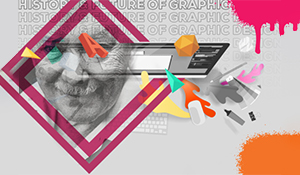With design evolving over the years and occupying a big part of our everyday lives, it is now time to bring its importance out of obscurity.
“The life of a designer is a life of fight. Fight against ugliness, just like a doctor fights against disease. For us, the visual disease is what we have around, and what we try to do is cure it somehow with design.
This is how Massimo Vignelli, the great designer, describes this profession.
The first designer
William Addison Dwiggins was the first person to call himself a graphic designer in 1922. He had a varied and fascinating career, doing everything from advertising to lettering, book design, and illustration.
However, Dwiggins hadn’t really started the design arts he had contributed to. People have been doing lettering and layout for as long as there have been letters, and illustrations go back much further.
Hence, his true contribution was to get people to think of design as a practical skill set, rather than a purely artistic one.
The evolution of design throughout the years
Old advertisements were more like short essays, picture books, pitches all combined into one.
Starting in 1940, graphic design showed a major switch. Images have become more bold, modern, and designed to make people feel something. This was caused by the need for effective, emotionally powerful propaganda.Artists and graphic designers learned to create designs that were confrontational, inspiring, and even outrageous.
After the 1950s, graphic designers were able to break free from the rules that had been put in place for commercial design. This led to an era of rapid change that has continued ever since.
The future of graphic design
In normal times, things in the design world don’t change quickly. For example, in the 2010s, minimal logos weren’t just restricted to a single year but persisted throughout the decade.
However, what we’re experiencing in general terms is a very long way from ‘normal times’. And all that uncertainty is moving many aspects of design in radically different directions; sometimes so quickly, we barely notice it happening.
Whether you’re walking past a digital billboard, scrolling through a website, or navigating an application, you can see more motion design at the moment. And people in the profession believe this can only be a good thing.
However, this trend is even influencing static materials, such as packaging: people now have that behavioral understanding of ‘scan for information’.
We’re still not certain where the design evolution is leading, but all we can do now is wait and watch.
by Perla Lahoud



